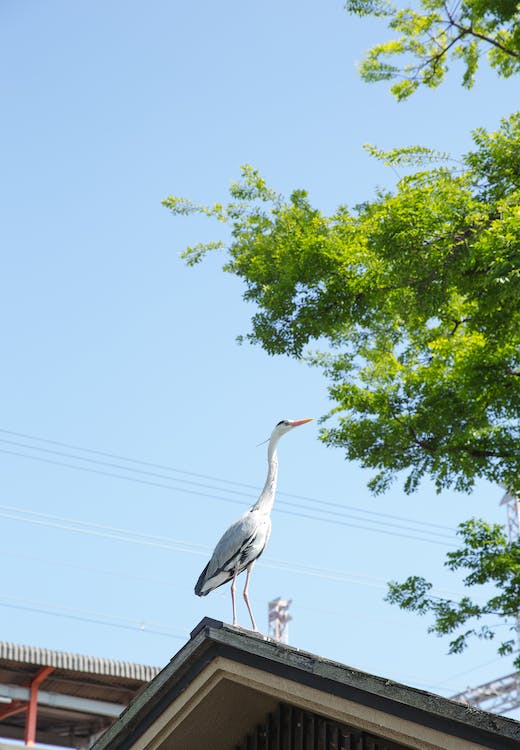The Grey Heron is a large and long-legged predatory bird that is endemic to continents like Europe, Asia, and Africa. It belongs to a heron family Ardeidae, together with Agami Heron, Capped Heron, Whistling Heron, and White-faced Heron.
The Grey Heron looks similar to its close relative, the North American Great Blue Heron, but the Blue Heron is more massive and has chestnut-brown thighs and thighs.
It is a bird that usually resides in wetland areas such as ponds, marshes, lakes, and rivers. As birds with sharp, powerful beaks, they have very few predators who can outwit them.
Also, the Grey Heron was depicted in various artistic and cultural forms. In Ancient Egypt, the bird signifies sun, rebirth, and creation. Meanwhile, in Ancient Rome, the Grey Heron was deemed as the bird of divination. Back in the day, roasted Grey Herons were a form of a luxurious dish served during state banquets.
Since their overall population size is at a stable rise across several continents, the International Union of Conservation of Nature (IUCN) Red List listed this species as Least Concern. The estimated world population of adult Grey Herons ranges from 790,000 to 3,700,000 individuals.
Its ten levels of scientific classification are as follows:
Kingdom – Animalia
Phylum – Chordata
Class – Aves
Subclass – Neornithes
Infraclass – Neognathae
Superorder – Neoaves
Order – Pelecaniformes
Family – Ardeidae
Genus – Ardea
Species – Ardea cinereal
The physical characteristics of a Grey Heron
Like usual great herons, an adult Grey Heron is a large bird that grows up to 100 cm. The length of its wingspan is 155-195 cm. It can weigh from 1.02-2.08 kg. Its top speed can reach up to 64 km/h.
As its name suggests, the Grey heron has a grey plumage—ashy-grey on the upper body part, and greyish white on the lower half. An adult Grey Heron has a head that is white and black in color. The color of its long beak is pinkish-yellow, but it turns to an orange shade during the breeding season. Its small eyes are yellow.
Long black feathers extend from the eyes to the start of the neck, forming a beautiful crest. Juvenile birds usually lack the black stripe on the head and look duller than adults. Its eye-catching long legs are brown in color. A Grey Heron pulls its head into its body during its flight, retracts its long neck, and stretches its long legs behind them.
Grey Heron’s distribution and habitat
Its population is spread across parts of the northern, central, and southern parts of Africa, mainly in the Sahara Desert, the Canary Islands, Algeria, and Tunisia.
In order to live and thrive successfully, Grey Herons require habitats that experience at least four months of hot weather because warmth is essential for nesting and the development of their chicks. Likewise, they need a nearby shallow body of water, which is where they hunt for food. Bodies of water include marshes, freshwater rivers, lakes, streams, and the like.
The behavior of a Grey Heron
Grey Herons usually live in solitude and non-sociable. Although they have been seen among other animal groups such as gulls, Grey Herons typically keep a safe distance from other animals. They only form groups when there’s plenty of food and during the dawn of breeding season to find their respective mates. During day time, Grey Herons walk on the ground. Before night time, they move to the branches of trees.
The weather brings a significant impact on their behavior. During cold seasons, they will sleep more than usual. During windy conditions, they prefer to rest than sleep.
To show their aggression, Grey Herons displays a stabbing motion performance using their head and neck. During the breeding season, male Grey Herons will produce loud cries to attract the females. These calls are usually followed by flapping their wings and pointing their bills upwards.
Grey Heron’s dietary habits
Grey Herons are primarily piscivores, meaning they mostly eat fish. In addition to this, they also feed on insects, frogs, crustaceans, and small mammals. Studies have also observed that Grey Herons attempted to consume White-throated Rail, making it the largest bird that the Grey Herons attempted to eat.
While waiting for the perfect opportunity to catch its prey, a Grey Heron will usually stand up on one foot in the water and wait. This species of bird was said to be most successful in catching prey under the moonlight.
BOTSWANA BIRDS | SOUTH AFRICA BIRDS
NAMIBIA BIRDS | ZAMBIA BIRDS | ZIMBABWE BIRDS
